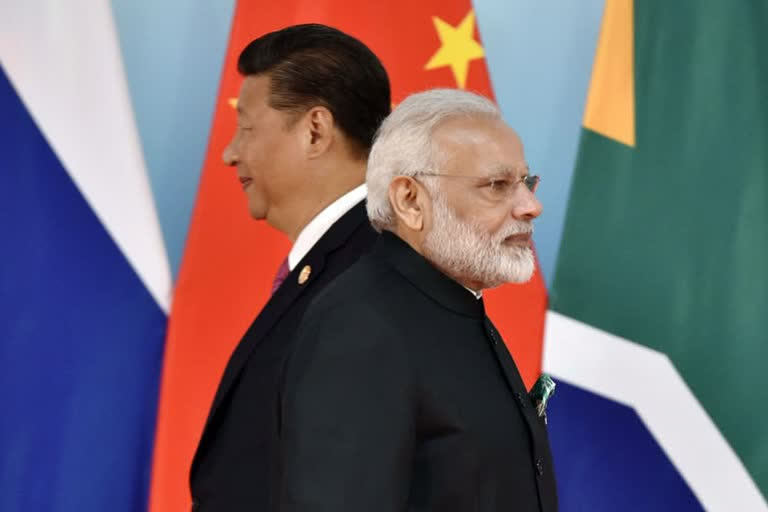New Delhi: Emotions are currently running high among serving soldiers and retired veterans from the armed forces, as well as among the people of the country, who are feeling hurt at the loss of 20 lives of Indian Army personnel in violent clashes with the Chinese military.
There has been a rising sense of hurt and shame among the Indian citizens over the humiliation of death of Indian soldiers including a commanding officer of an infantry regiment on June 15/16 intervening night in the clashes that went on for over six hours continuously.
The overflowing anger of Indians seems to be forcing the hands of the Indian government into escalating the current nearly 45-day face-off between the Indian Army and the Chinese People’s Liberation Army soldiers.
There have been calls from retired military Generals that India needs to give China a bloody nose immediately when the anger among the soldiers, who have lost their brothers-in-arms. They want a military response to the military violence unleashed on the Indian soldiers.
If the Indian government succumbs to the pressure mounted by retired Generals on television studios and the overwhelming show of anti-China sentiments by the people, it would become inevitable for Prime Minister Narendra Modi to display machismo in sending a befitting response to the Asian dragon.
Read:| China trying to deflect attention away from domestic issues, says Brigadier Prabir Kumar Sanyal
That would mean only one thing, a sure shot push towards the second Sino-Indian war after 1962. Though there has been an admission among the Indian strategic circles that the 1962 India’s China war led to its defeat, this more or less serves as a propaganda tool to the Chinese.
One look at the Chinese foreign ministry spokesperson’s statement and the Western Theatre Command spokesperson’s remarks yesterday on the June 15 clash would give you a sample of Beijing‘s arrogance and its superiority complex vis-a-vis its southern neighbour, another Asian giant.
The Chinese Communist Party and its armed forces seem yet to realise that the year 2020 is not 1962 and that India’s military has been modernised with weapons and equipment in these nearly 60 years since. Moreover, the present conflagration in Ladakh is a direct result of the infrastructure projects that India is building along its borders with China.
Also, India will be more than willing to use its air force jets, such as the heavyweight Sukhois and the latest Rafales. Indian fighter jets can operate much easily from Indian airbases than the Chinese air force warplanes in view of the obvious disadvantage the Tibetan heights pose on the payload carrying capacity of the PLA-Air Force aircraft.
This handicap will hinder China air operations in spite of the midair refueller force multiplication capability for jets operating from air bases in mainland China. This chinks in the Chinese armour will likely be the game changer in 2020, as India had failed to use its air force in the 1962 war.
Notwithstanding the military option, which has to be exercised at a time and place of India’s choosing as I argued yesterday, it would be wise if India figured out other non-military options to squeeze China in areas that could be a pain in the neck for Beijing.
Already, outfits like the Swadeshi Jagran Manch and Confederation of All India Traders, a national traders’ body with lakhs of members, have begun to mobilise the commoners in uniting against China and boycotting goods that are imported from the northern Indian neighbour.
The Narendra Modi government, on its part, can easily aid these citizens’ efforts, by curtailing access to Chinese companies to the Indian market of 130 crore people. Already the balance of trade is stacked 8:2 against China, which gets $82 billion worth of business out of the Indian markets through its exports than India with $18 billion. India should obviously reduce Chinese imports.
Read:| India-China Faceoff: Indian Army to hold Major-General level talks to resolve border issues today
These two related actions by India would choke the already gasping gross domestic product of China and hit them badly in the manufacturing sector, at a time when unemployment levels in the Asian giant are at a high of six per cent.
The Indian government can also disallow any Chinese-controlled company to introduce or operate its digital applications in India, especially in the Information Technology and the Communications sectors and other strategic sectors. After all, the Chinese companies are the economic arms of the Chinese Communist Party and pose a long-term cyber threat and espionage challenge in these sectors.
Chinese companies have invested heavily — at present valued at $4 billion — in Nepal’s power projects. It is but surprising that India is buying power from Nepal and indirectly helping China to prosper with good return on its investments. Why can’t the Indian government stop buying power from Nepal and thereby squeeze these Chinese investments and render them non-viable?
One of the easiest actions the Modi government can take is to ban the Chinese infrastructure companies that are investing in projects in the China-Pakistan Economic Corridor (CPEC). Stop giving these Chinese companies with CPEC connection any Indian infrastructure projects.
Already, there has been a social media controversy over reports of a Chinese firm being awarded a contract for building the Delhi-Meerut Regional Rapid Transit System project. The government was forced to issue a clarification today that this tender was still progressing and that no contract out of the five bidders has yet been finalised.



